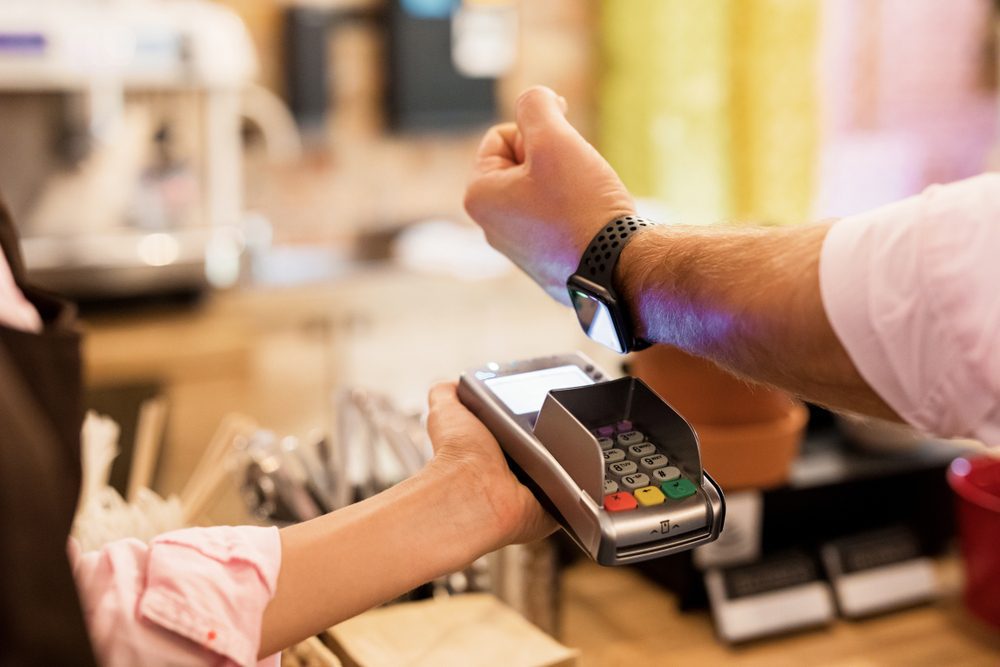The technological future has arrived, in the form of voice commerce, SMS payments, chatbots and augmented reality, and shoppers are ready to embrace it: 67% of customers said they’d switch to a new brand if they offered a more futuristic experience, according to The Sci-Fi Shopper survey by Elastic Path. However, the report also found that retailers and customers aren’t seeing eye-to-eye on just how tech-savvy the shopping experience has become.
“The Sci-Fi Shopper sounds like we’re in the era of the Jetsons: I have a Star Trek communicator on my wrist as an Apple Watch, and an Alexa in my home,” said Darin Archer, Chief Strategy Officer at Elastic Path in an interview with Retail TouchPoints. “What came back was a pretty strong message that said retailers are really not delivering on some of the experiences that technology enables across channels. The brands we surveyed felt like they would get a seven out of 10 on these futuristic shopping experiences; the consumers rated them down at a three or four.”
Retailers can’t solve this issue by simply updating their technology while just maintaining their current practices. The biggest gaps between retailer and shopper beliefs pointed to a lack of convenience, not just technology:
- Long checkout lines: 57% of consumers experience this, but only 35% of brands believe it’s a pain point;
- Out-of-stocks: 55% of consumers experience this, but only 39% of brands believe it’s a pain point;
- Long customer service wait times: 42% of consumers experience this, but only 36% of brands believe it’s a pain point; and
- Unhelpful/uninformed associates: 38% of consumers experience this, but only 20% of brands believe it’s a pain point.
- Same-day delivery (75%);
- Curbside pickup (72%);
- The ability to purchase from a mobile phone via text (63%);
- Amazon Alexa support (56%); and
- The ability to purchase from a smart watch (50%).
Online And Offline Need To Be Equals
Many retailers are already aware of this gap: 39% identify a lack of convenience for their customers as their largest challenge. Easing these pain points comes down to knowledge of both the customer and the product. For example, more accurate inventory cuts down on checkout errors and out-of-stocks, while personalization can improve both customer service and the in-store experience.
Retailers also need to stop thinking about online and in-store as separate channels that can be treated differently, as that just exacerbates convenience challenges. For instance, while 60% of brands personalize marketing communications using customer data, only 45% personalize their web sites for individual customers, and only 24% use this information in-store.
Customers don’t think about the challenge of offering an e-Commerce experience in-store; they just question why they aren’t receiving optimal service everywhere. Appealing to the sci-fi shopper means harnessing tech to reduce friction across channels.
“Retailers will say, ‘We’re trying to address it, but we’ve grown up with these two different platforms: one for physical stores and one for the online channel,’” said Archer. “But when you’ve got a shopper standing in a long checkout line and they’re staring at their phone, and they’re potentially logged into the retailer’s app, it’s hard for that individual to not just be wondering, ‘Why can’t I just tell him what I have in my hands through this app and walk out the door?’”
Overcoming this problem involves connecting e-Commerce and brick-and-mortar operations through a single system, according to Archer. Empowering associates with customer and product knowledge helps them offer superior service, while a modern inventory system can reduce out-of-stocks and improve wait times by enabling checkout-less payments (which 67% of shoppers desire).
New Technology Should Drive Convenience Too
Even retailers with cutting-edge omnichannel operations need to have a future-forward outlook. The top features and services shoppers expect retailers to adopt in the next year continue to push the envelope for convenience:
While some of these technologies haven’t achieved mainstream deployment, retailers should still consider their potential for reducing friction. Only 19% of shoppers have used voice technology to make purchases, but these early adopters are already hooked: 22% of them make voice purchases multiple times a week, and another 21% use the tech at least weekly.
Many of these customers aren’t completely comfortable with voice ordering yet, but they’re still using it for simple orders like groceries, according to Archer. He expects adoption to follow a similar pattern to e-Commerce: shoppers started using it for the basics before its capabilities and convenience ramped up over time.
Retailers need to simultaneously catch up to the sci-fi shopper’s immediate demands while laying the groundwork for tomorrow’s mainstream offerings. By keeping an ear to the ground and listening to what shoppers say about convenience, companies can turn science fiction into retail fact.













